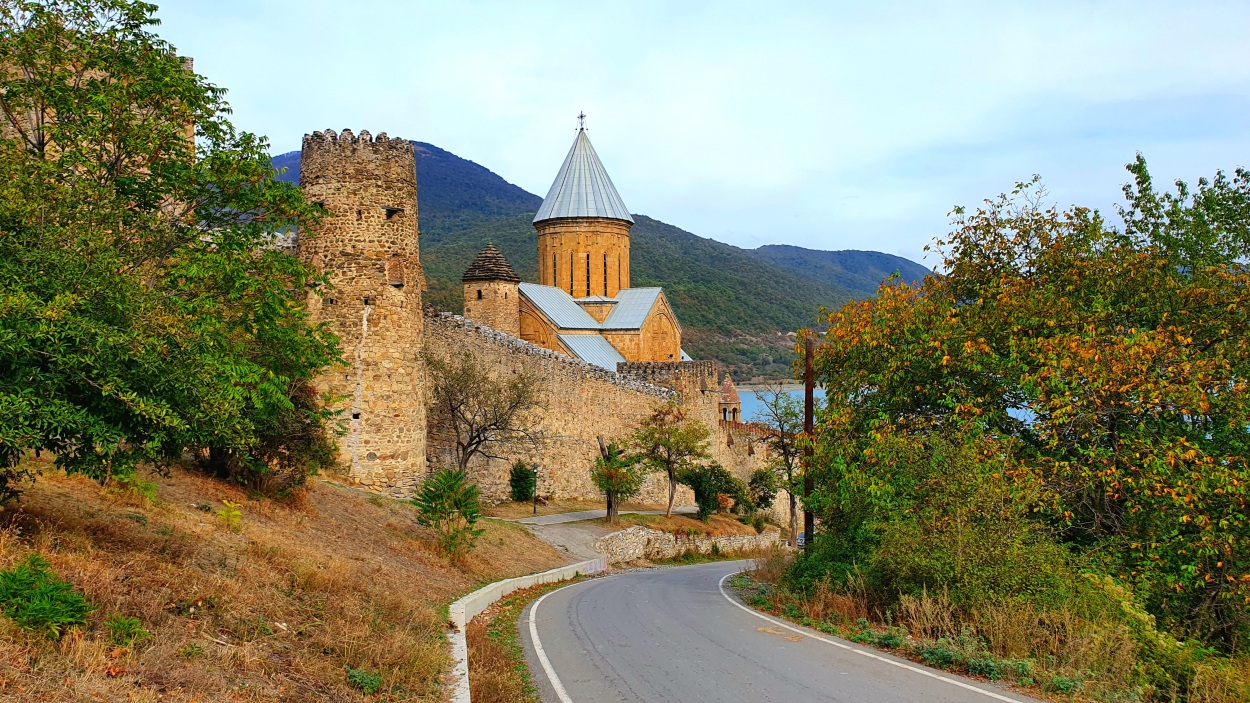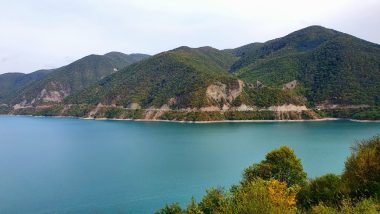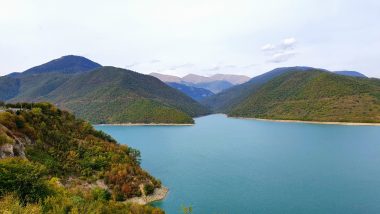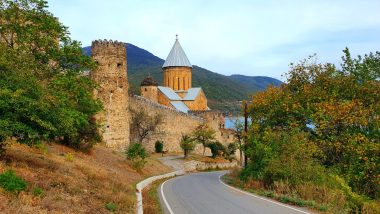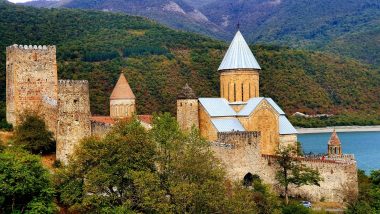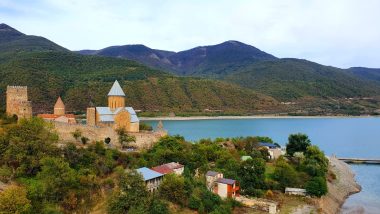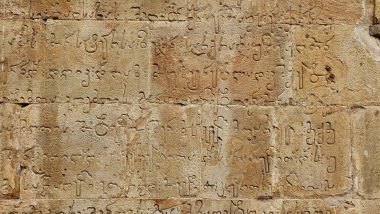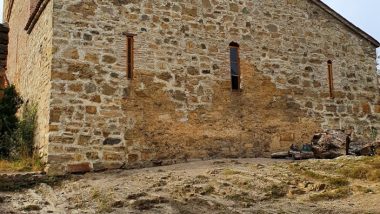Ananuri is a classic example of Georgian architecture, enhanced by its superb location overlooking the Zhinvali Reservoir. The fortress historically belonged to the dukes of Aragvi, who ruled as far as the Tergi valley from the 13th to 18th centuries, and is today a popular stop on the Georgian Military Hwy. Within the fortress are two 17th-century churches, the larger of which, the Assumption Church, is covered with wonderful stone carvings on its exterior walls, including a large cross on each and various ancient scripts from all over the region, some of which have now totally disappeared. Inside the Assumption Church are a few vivid 17th- and 18th-century frescoes. In 1739, Ananuri was attacked by forces from a rival duchy commanded by Shanshe of Ksani and was set on fire. As a result, the Aragvi clan was massacred. However, four years later, the local peasants revolted against the rule by the Shanshe, killing the usurpers and inviting King Teimuraz II to rule directly over them. However, in 1746, King Teimuraz was forced to suppress another peasant uprising with the help of King Erekle II of Kakheti. The fortress remained in use until the beginning of the 19th century. When the castle was under siege, it was not defeated because a secret tunnel led to the water and thus provided a way to get food and water to the people who had taken refuge in the castle. The enemy finally captured a woman named Ana from Nuri, and tortured her to reveal the tunnel’s location. But she chose to die rather than give the secret away. Hence the castle was called Ananuri, and she became a legend.
Parking location – Ananuri: 42.163731N 44.701890E (🅿️ – 5 GEL / 24 hrs, 🚻 – 1 GEL)


